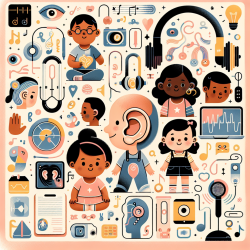As a practitioner dedicated to enhancing the lives of children, staying informed about the latest research is crucial. One particularly insightful study, "The Role of Self-reports and Behavioral Measures of Interpretation Biases in Children with Varying Levels of Anxiety," provides valuable findings that can be implemented in clinical practice to improve outcomes for anxious children.
Understanding Interpretation Biases
Interpretation biases are cognitive distortions where individuals interpret ambiguous situations negatively. This study investigated these biases in children with varying levels of spider fear and social anxiety, revealing significant content-specific interpretation biases.
Key Findings
- Children with higher levels of self-reported spider fear and avoidance behavior displayed more negative interpretations of spider-related scenarios.
- Children with higher anxiety during social speech tasks showed more negative interpretations of social threat-related scenarios.
- There was no significant relationship between self-reported social anxiety and interpretation bias for social threats.
Implications for Practice
The findings underscore the importance of using both self-reports and behavioral measures to assess anxiety in children. Here are some actionable steps practitioners can take:
- Use Specific Scenarios: Tailor cognitive-behavioral therapy (CBT) to address specific fears, such as spider fear or social anxiety, by incorporating relevant scenarios into treatment.
- Combine Measures: Employ both self-reports and behavioral tasks to get a comprehensive understanding of a child's anxiety levels and cognitive biases.
- Focus on Content-Specific Biases: Target content-specific interpretation biases in therapy to achieve better outcomes. For instance, focus on spider-related biases for children with spider fear and social-related biases for those with social anxiety.
Encouraging Further Research
While this study provides a solid foundation, there is still much to learn about content-specific interpretation biases. Practitioners are encouraged to stay updated with ongoing research and consider participating in studies to contribute to the field.
To read the original research paper, please follow this link: The Role of Self-reports and Behavioral Measures of Interpretation Biases in Children with Varying Levels of Anxiety.










